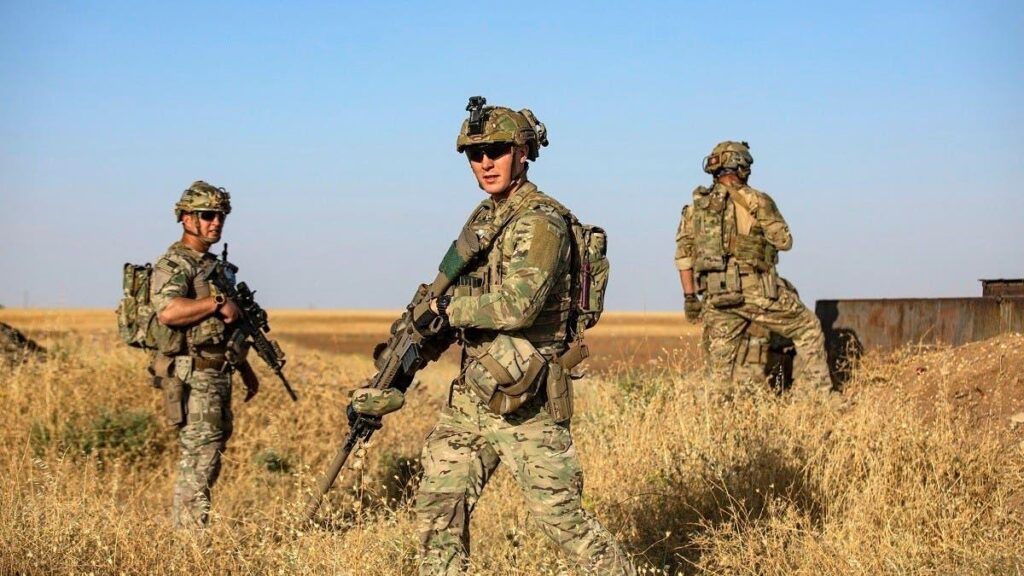in a strategic shift aimed at redefining America’s military presence in the region, the United States has announced plans to reduce its footprint in Syria to fewer than 1,000 troops. this decision marks a significant departure from previous military strategies and demonstrates a deliberate effort to recalibrate America’s role in the ongoing conflict in the Middle East.By scaling back its forces in Syria,the US is poised to make a statement on the global stage and reassess its approach to international diplomacy.
US Military Withdrawal from Syria: Implications for Regional Stability
With the recent proclamation of the US reducing its military footprint in Syria to fewer than 1,000 troops, the implications for regional stability are significant. This decision marks a shift in the US’s involvement in the Syrian conflict and raises vital questions about the future of the region.
Some of the key implications of this withdrawal include:
- Potential power vacuum: The reduction of US troops could create a power vacuum that may be filled by other regional players, perhaps leading to increased instability.
- Impact on Kurdish allies: The withdrawal raises concerns about the fate of Kurdish allies in the region, who have been key partners in the fight against ISIS.
Strategic Considerations for Maintaining National Security Interests
US Military Presence in Syria: The United States has announced plans to reduce its military footprint in Syria to fewer than 1,000 troops. This strategic move is aimed at maintaining national security interests while also shifting focus to other regions of concern.
Implications of the Reduction: With fewer troops in Syria, the US will need to carefully consider the potential impact on stability in the region. It is vital to ensure that essential objectives, such as counterterrorism efforts and the protection of allies, are still effectively met. Close coordination with international partners will be crucial in navigating this shift in military presence.
Challenges and Opportunities in Transitioning to a Smaller Troop Presence
As the US plans to reduce its military presence in Syria to fewer than 1,000 troops, there are both challenges and opportunities that come with this transition. One of the main challenges will be ensuring the safety and security of the remaining troops in a volatile region. With a smaller footprint, the risk of attacks from various extremist groups may increase, necessitating careful planning and coordination with local allies.
On the other hand, this reduction in troop numbers presents an prospect for the US to shift its focus towards other strategic priorities in the region. By working more closely with diplomatic and economic tools, the US can potentially achieve its objectives in Syria while reducing the reliance on military force. This transition also provides an opportunity to reassess the overall strategy in the region and make adjustments based on the evolving geopolitical landscape.
Future Policy Recommendations for US Involvement in Syria
With the recent announcement of the US reducing its military footprint in Syria to fewer than 1,000 troops,there are several future policy recommendations that should be considered for US involvement in the region. One key recommendation is to prioritize diplomatic efforts in resolving the conflict and working towards a enduring peace agreement. This can include engaging with all relevant parties, including the Syrian government, opposition groups, and regional actors, to find a political solution to the crisis.
Another recommendation is to focus on providing humanitarian aid and support to the people of syria who have been affected by the conflict. This can include increasing funding for humanitarian organizations, supporting refugee resettlement programs, and working with international partners to address the ongoing humanitarian crisis. By shifting the focus to diplomacy and humanitarian efforts, the US can play a constructive role in promoting stability and peace in Syria.
Closing Remarks
As the US prepares to reduce its military presence in Syria to fewer than 1,000 troops, the future of the region remains uncertain. While some see this as a step towards de-escalation and a shift towards diplomacy, others fear the potential consequences of a reduced military footprint. Only time will tell how this decision will impact the ongoing conflict in Syria and the stability of the region as a whole. One thing is certain – the world will be watching closely as the US navigates its role in this complex and ever-changing situation.


